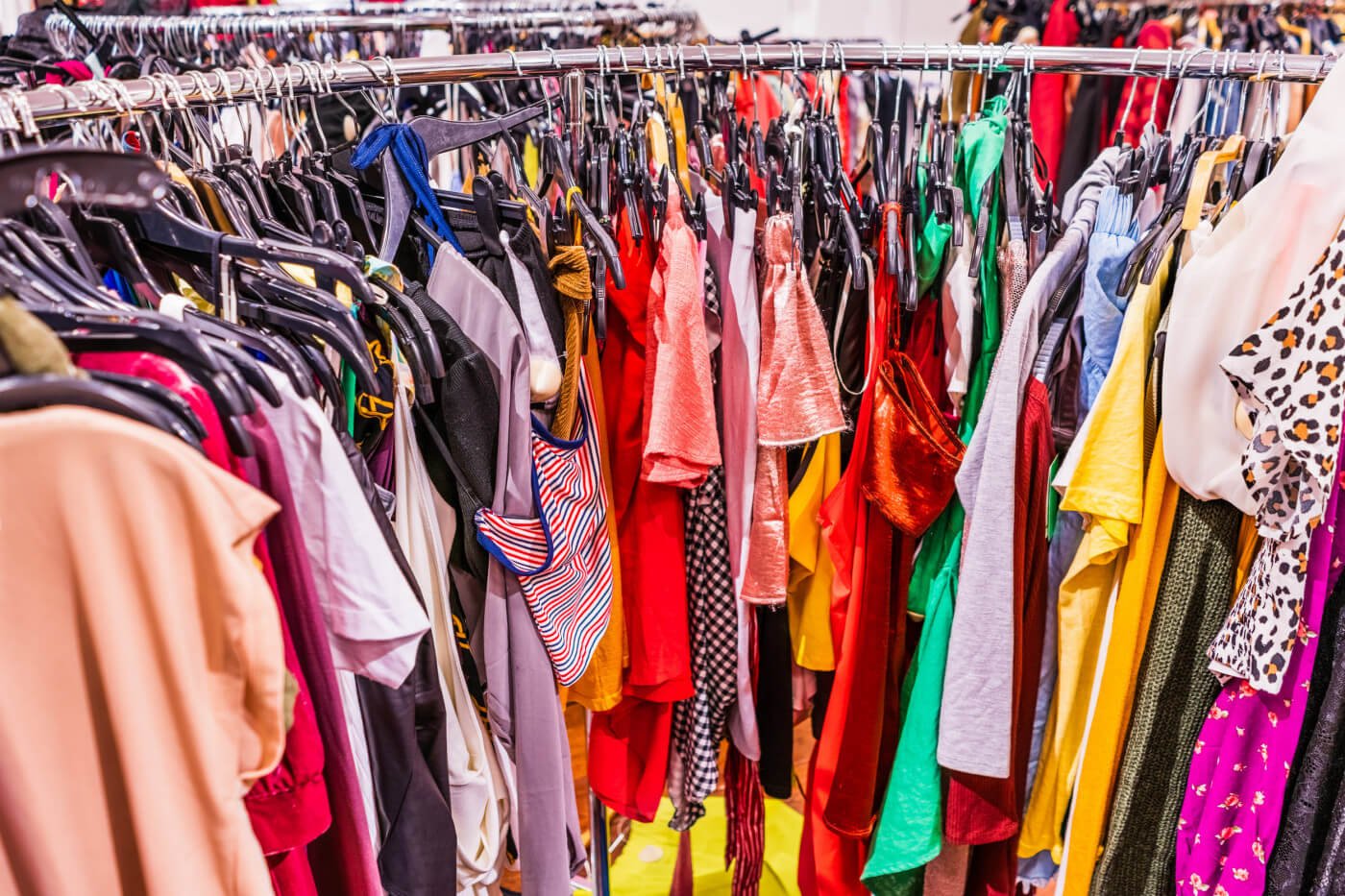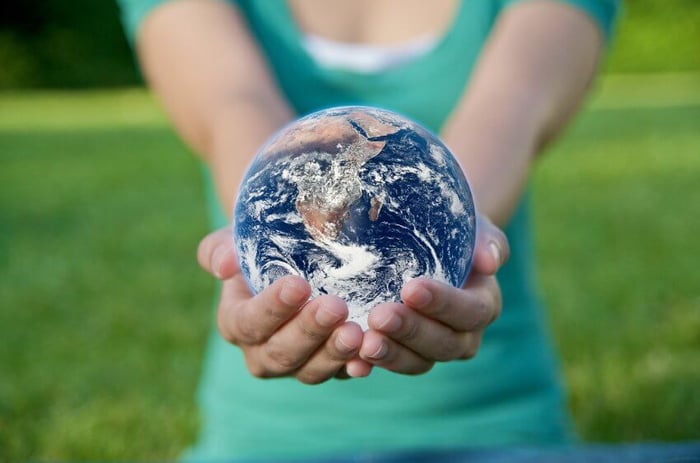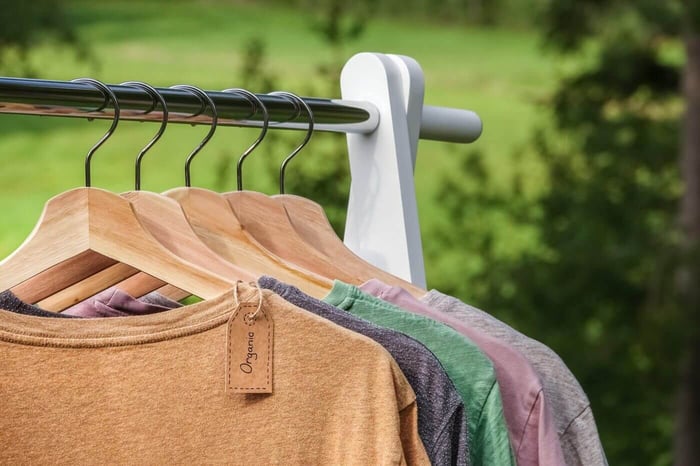Ever wondered about fast fashion vs sustainable fashion? This post will help you understand the differences including recent climate change trends and why it's critical for all of us to start thinking about the way we consume things.
What is Fast Fashion?
The term “fast fashion” was coined in 2007 when it became clear that many retailers were selling clothes at extremely low prices. These companies are able to do this because they have no concern for their customers’ well-being or the environment. They only care about profit margins.
This type of business model has become more popular as the world becomes more connected through social media and online shopping. Consumers are now able to buy cheap products from all over the globe without ever having to leave home. As long as there is an internet connection, shoppers can shop anywhere.
This trend has been very profitable for some businesses but it also comes with a cost. Fast fashion creates a lot of waste which ends up polluting our oceans and landfills. It takes resources to produce these clothes and those resources are often times taken from developing countries.
Attention: Use discount code "SHOP10" at checkout to save 10% on The Nori Press!
How Does Fast Fashion Impact Us?
We live in a time where we have access to so much information. We know what is happening around us and how we should act within our communities. However, if we continue to purchase cheaply made items, we will never truly understand the true effects of our actions.
We need to start thinking about the way we consume things. How does buying something affect the people who make it? What happens after you throw away your old clothes? Do you recycle them properly? Are you doing anything to help stop the problem of fast fashion?
The 2022 IPCC Climate Change Impacts Report - Why This Matters
The IPCC is a global body created by the United Nations to address the most pressing issues facing humanity today. Its mission is to provide policymakers with the best available evidence to guide decisions about climate change mitigation and adaptation. The IPCC has three working groups: Working Group I focuses on the physical science aspects of climate change; Working Group II addresses human dimensions of climate change, and Working Group III looks at mitigation options.
On Monday, February 28, the United Nations Intergovernmental Panel on Climate Changeoffsite link (IPCC) released its latest report, which will focus on climate solutions and regional and local adaptation. It will also assess the feasibility of various adaptation strategies to curb current and predicted impacts of climate change.
The new report reaffirms that the science pertaining to climate change is settled, and the most important response to climate change is a large-scale reduction in carbon dioxide pollution that drives global warming.
Watch: The below video interview features NOAA scientists Libby Jewett and Kirstin Holsman — contributors to the latest IPCC report.
...we have to act, we need a whole of society approach, no one can be left out, no household, no businesses, no government...
What is Fast Fashion and how is it made?
Fashion is defined as "the prevailing style or mode of dress among members of a particular class or group." In this case, we're talking about clothing. Fast fashion refers to inexpensive clothing that is produced quickly and sold cheaply to maximize profit. This type of clothing is usually mass-produced using labor practices that exploit workers.
In order to create fast fashion, companies cut corners and use low-quality materials. They cut costs by not paying their employees fairly and they cut corners by producing clothing in factories without proper ventilation systems and safety equipment. These cheap products end up in landfills when customers don't want them anymore because they look worn or faded quickly.
Clothing is typically manufactured through four stages: design, cutting, sewing, and finishing. Designers first come up with ideas for new styles, then those designs are brought into factories where patterns are cut from high-quality fabrics. Fabrics are often imported from countries like Bangladesh, Indonesia, Pakistan, China, and India. Workers sew together the pieces of fabric into garments following the pattern. Once all the pieces are sewn together, the clothes go through a finishing process. Here, buttons are added, zippers are installed, and any labels are attached. Clothes may also get shipped down the line to be printed with logos and marketing messages.
Why should we care if our clothes are Fast Fashion?
It's hard to say exactly what impact fast fashion has on the environment. However, it's clear that the industry is unsustainable. There are many problems associated with fast fashion including poor working conditions for garment workers, excessive consumption of natural resources, and increased greenhouse gas emissions.
Garment manufacturing uses a lot of water. The washing machines used to clean the clothes at each stage of the manufacturing process consume huge amounts of electricity. Garments are often thrown away after only a few wears instead of being repaired or recycled.
Garment production causes significant air pollution. Factories can emit dangerous gases such as formaldehyde, benzene, toluene, xylene, and hydrogen cyanide. These chemicals cause respiratory illnesses, lung cancer, skin rashes, headaches, fatigue, nausea, and vomiting. Additionally, these factories contribute to global warming by emitting large amounts of carbon dioxide (CO2) during the production process.
Fast Fashion vs Sustainable Fashion - Why is Fast Fashion Bad for the Environment
There are many reasons why fast fashion isn't sustainable. One reason is that it relies on cheap labor and sweatshops. Cheap labor means workers receive lower wages and fewer benefits than people who work in more expensive facilities. Sweatshop labor is illegal under U.S. law but it still happens in developing countries like Bangladesh, Cambodia, Ethiopia, Indonesia, Nepal, Philippines, Sri Lanka, Thailand, Turkey, and Vietnam.
Another problem is that fast fashion relies heavily on synthetic fibers. Synthetic fibers are made out of petroleum and can take hundreds of years to decompose. This makes them one of the biggest contributors to climate change.
Another issue is that fast fashion creates waste. When consumers buy clothing, they usually throw it away once it becomes too old or damaged. In fact, most clothing ends up in landfills.
The final problem is that fast fashion is harmful to animals. Animals raised specifically to produce leather end up suffering terribly before their deaths. They're kept in small cages without access to food or water. Leather is also produced from skins taken from wild animals. Wild animals suffer greatly when they're killed so this practice is cruel and unnecessary.
Fast Fashion vs Sustainable Fashion - What can I Do About It?
The best thing you can do is avoid buying fast fashion! If you want to support ethical clothing companies, check out the Ethical Apparel Guide. You can also find alternatives to fast fashion by shopping in secondhand stores or thrift shops.
If you really want to support sustainable fashion, consider purchasing items from brands that use eco-friendly fabrics. Here are some of our recent posts about sustainable clothing:
- 15 Top Affordable Sustainable Clothing Brands
- Top Hemp Clothing Companies Promoting Sustainability
- How To Sell Preloved Clothes Online and Why It's Important
Also, consider using The Nori Press, a new type of steam and dry iron combo that will mean fewer trips to the cleaners. It is perfect for steaming clothes. It's easy to store, fast, and easy to use and provides outstanding results without the need for an ironing board.
How Retailers Are Responding to Consumer Concerns About Fast Fashion
Retailers have been responding to consumer concerns about fast fashion by offering more affordable options. Some retailers offer free shipping or flat rate shipping prices. Others have created subscription boxes where customers pay a monthly fee for unlimited deliveries.
Other ways retailers are trying to make fast fashion sustainable include:
- Offering discounts to customers who purchase multiple items.
- Using recyclable packaging materials.
- Creating reusable bags with handles.
- Providing information about how much water and energy was used to create their products.
- Making sure all employees are trained on sustainability issues.
How Can We Make Fast Fashion Sustainably Better?
We need to stop supporting unethical practices that harm our planet. Consumers must demand better quality clothes at fair prices. Companies should be held accountable for their actions and punished if they don’t follow through with promises to improve.
We need to stop using plastic. Plastic pollution is destroying our oceans and killing marine life. It takes thousands of years for plastic to break down into microplastics which enter the human body and cause serious health problems.
Companies should invest in recycling programs instead of creating new plastic bottles. Recycling helps reduce landfill space and saves money because it doesn’t require as much energy to manufacture.
Companies should provide more transparency about what happens during the manufacturing process. Transparency allows consumers to know exactly what goes into making their product.
Consumers should boycott companies that aren't transparent.
Companies should hire people who care about the environment. People who work in factories should receive training on proper working conditions. Employees should get paid fairly and treated well.
Companies should donate profits to organizations that help the environment.
However, these initiatives aren’t enough to stop fast fashion. The industry continues to grow because consumers continue to purchase fast fashion.
What Does Slow Fashion / Sustainable Fashion Mean?
 Slow fashion means investing time and effort into designing high-quality pieces that will last longer than one season. This type of fashion is often referred to as “slow fashion” because it takes longer to produce.
Slow fashion means investing time and effort into designing high-quality pieces that will last longer than one season. This type of fashion is often referred to as “slow fashion” because it takes longer to produce.
Sustainable fashion means producing clothing without harming the environment. Sustainable clothing uses less water, land, and energy. It also reduces waste and toxins.
- Sustainable fashion can take many forms including:
- Organic cotton
- Natural fibers like hemp and bamboo
- Recycled materials
- Made from natural dyes
- Lessened use of chemical pesticides
- Recycled plastics
- Reduced packaging
- Reusable shopping bags
- More sustainable fabrics
Why Should You Care About Sustainable Fashion?
The average person spends $1,000 per year on clothing. That’s why we have to do everything we can to protect our planet.
The average person buys only 2 or 3 pairs of jeans every two years. If everyone did this, we would save over 1 million barrels of oil each year.
The average American throws away 500 pounds of textiles every year. This includes clothing and bedding.
Each pair of jeans you buy contributes to the destruction of 15 trees.
If everyone bought just one pair of pants made from recycled material, we could recycle nearly 4 billion pounds of plastic.
If everyone wore clothing that was made sustainably, we could eliminate almost half of all the greenhouse gas emissions caused by global warming.
If everyone purchased a single item of organic cotton clothing, we could prevent the loss of up to 5,000 acres of rainforest.
If everyone switched to reusable grocery bags, we could reduce the number of disposable plastic bags used worldwide by 50%.
If everyone stopped buying clothes made with synthetic materials, we could reduce the demand for petroleum products by 10% and eliminate the need to mine 75 million tons of coal annually.
If everyone started wearing clothing made from recycled plastic, we could cut down on the demand for virgin polyester by 80%, which would free up an estimated 100 billion gallons of water.
If everyone stopped using non-recycled paper towels, we could reduce the consumption of paper by 30%.
If everyone stopped purchasing clothing made with harmful chemicals, we could eliminate more than 90 billion pounds of hazardous chemicals released into the air, soil, and waterways each year.
How Can I Start Making My Clothes More Sustainable?
You don't have to start making your own clothes from scratch. There are plenty of ways to make your existing wardrobe more environmentally friendly.
- Buy secondhand clothing.
- Secondhand clothing is generally cheaper than new clothing and comes in great condition.
- Use cloth diapers.
- Cloth diapers are easy to wash and dry, they're biodegradable, and they keep babies warm.
- Use eco-friendly detergents.
- Most eco-friendly laundry detergents contain no harsh chemicals, such as chlorine bleach, phosphates, and perfumes. They also work better at removing stains.
- Wash your clothes in cold water.
- Coldwater uses less energy than hot water. It also reduces wear and tear on your washing machine.
- Wash your clothes in shorter cycles.
- Shorter cycles use less energy and help extend the life of your washing machine.
- Use natural fabrics.
- Natural fibers like cotton, hemp, linen, and wool require fewer resources to produce than synthetics.
- Recycle old clothing.
- Many thrift stores will take back gently worn clothing and give you store credit. You can also sell the items online or donate them to charity.
- Donate unwanted clothing to charities.
- Many people find it difficult to part with their old clothing because they feel guilty about throwing out perfectly good garments. Donating your clothing to a local charity can alleviate this guilt and help others who might be in need.
Make your own clothes.
Making your own clothes is a fun way to learn how things are put together and to save money. Plus, you'll know exactly what goes into the finished product.
Learn sewing skills.
Learning basic sewing skills will allow you to create your own unique outfits and customize your wardrobe.
Start small.
It may seem daunting to try to change everything at once, but you can begin by changing just one thing every week.
Attention: Use discount code "SHOP10" at checkout to save 10% on The Nori Press!
Here are some tips for sustainable shopping.
Sustainable Shopping - Tips For Buying Green!
- Buy Less: If you buy less stuff, you won’t need to go through all those steps to get rid of it later.
- Shop Local: When you shop locally, you support your community and the economy.
- Support Small Businesses: Supporting small businesses means supporting jobs in your area.
- Use Coupons: Coupons are a great way to save money while buying green.
- Look for Eco-Friendly Products: The best products are often the most eco-friendly ones.
- Recycle Your Old Stuff: Recycling saves energy, space, and materials.
- Buy Used: Buying used helps reduce waste and supports local economies.
- Be Aware Of Waste: Know where your trash goes when you throw something away.
- Make A Plan: Planning ahead makes shopping more efficient.
- Think About What You Need: Do you really need that sweater? Is there another option?
- Check Out Websites: There are tons of sustainability websites dedicated to helping you do the right thing.
- Know Where To Go: Most towns have a list of environmentally friendly shops.
In Conclusion - How does slow fashion impact you and the world?
The term “fast fashion” refers to the mass production of cheap items that are designed to be worn quickly and thrown away after a few uses. Fast fashion is usually associated with low prices and high turnover rates.
The term “slow fashion” refers to a style of clothing that is made to last longer than traditional fast fashion. Slow fashion is typically more expensive than fast fashion, but it also creates more value for the consumer.
Slow Fashion is a movement that encourages consumers to buy less, consume less, and invest in quality over quantity. Slow fashion is not only about reducing consumption; it’s about creating value and reusing discarded pieces of clothing.
Slow fashion allows us to live better lives without harming the environment. We can choose which pieces we want to keep and which we want to let go of. This gives us the freedom to express our individuality and creativity.
Slow fashion is a way to make the world a better place, one piece at a time. It’s a way to show the world that we care about the planet and each other.









